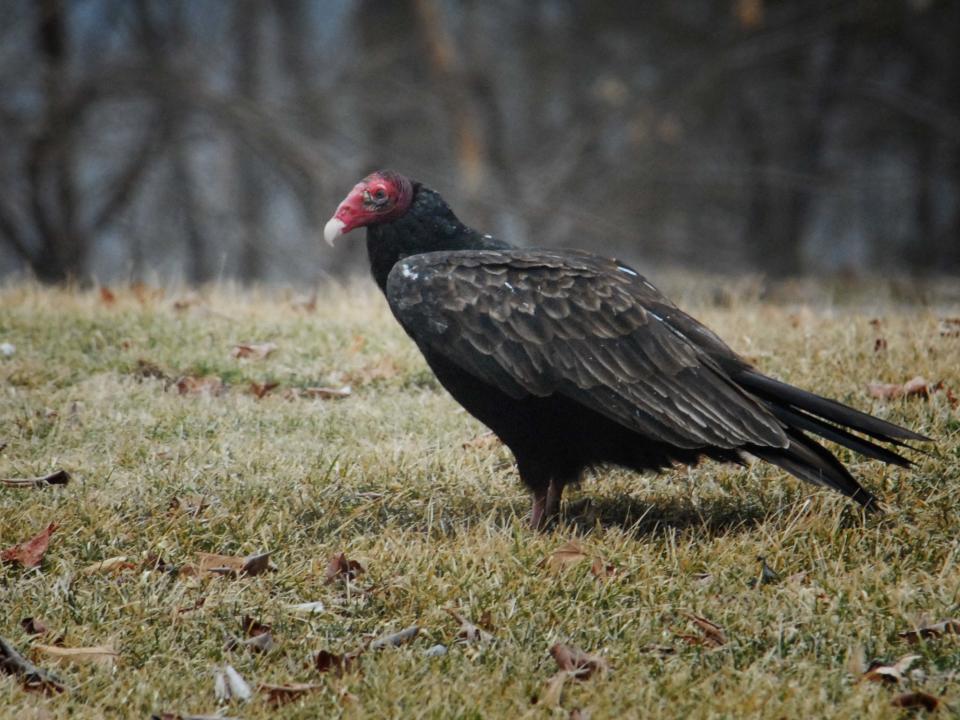With Halloween on the way, here's a look at the spookiest birds in our area
Halloween conjures images of ghosts, goblins, witches − and Hitchcock's birds. Spooky stuff!
While most people enjoy most birds, certain avian characteristics seem to evoke fear. Maybe dark colors make some birds spooky, like crows and ravens. Think Edgar Alan Poe's poem "The Raven" in which a fiery-eyed talking raven haunts the narrator in the dark of night, always croaking, "Nevermore."
Or maybe it takes masses of birds to generate spine-tingling spookiness. Think Alfred Hitchcock's 1963 horror-thriller "The Birds" in which enormous, vicious flocks of various bird species attack the people of Bodega Bay.
Hordes of gulls swoop through town, masses of sparrows drop down chimneys, swarms of crows and ravens attack school children, ultimately killing or maiming several characters. Spooky, indeed.
But no flock of gulls, sparrows, crows, or ravens has ever been recorded actually attacking humans. Well, except for the event that inspired Hitchcock. In 1961, in Capitola, California, hordes of seabirds attacked homes and crashed into cars, frightening residents who felt they were experiencing a real-life horror.
In fact, the birds were suffering from ingesting toxic algae. But no one understood that in the 1960s.
So, true, no flocks of birds have ever been recorded attacking humans. Well, okay, yes, there's another exception − but this exception is that of single birds, not flocks. If one approaches certain birds' nests too closely, one or both of the nesting pair may attack. Owls will fly straight at one's head, talons extended, ready to rake your scalp.

Mockingbirds take offense if someone or something threatens their nest. A cat knows to stay away after a mockingbird pecks its head or back. And people whom mockers deem unfriendly may also become targets. "My" mockers, however, never attacked me because they somehow knew I was fond of them. Of course, I also talked to them when I was near their nest. But don't tell anybody. So not really spooky, any of these.
There is one spooky bird, though, that surely deserves the title: turkey vulture. Sometimes incorrectly called "buzzards," vultures surely seem haunting. They're big, weighing three-and-a-half pounds and sporting a five-and-a-half foot wingspan. They're black-brown. They're ugly, given their bare-skinned red heads and beaks structured for ripping and tearing. Their only sounds are a screeching and hissing. They roost in flocks, sometimes the roost trees holding hundreds or even thousands. And they eat nothing but rot. Even dead skunks.
But it gets even spookier. They lay their two large eggs in spooky places, like tumble-down barns or houses, then soar above, ever watchful for potential predators. If they're threatened, they spit a highly acidic vomit, aiming for the eyes. To keep cool, they defecate on their own legs. The smell near a nest or roost sight is, well, unpleasant.
Given time, roost trees die from the accumulated matter.
But wait. Trick-or-treat! In spite of the vulture's disgusting features, we're wise to treat them well. They clean up carrion from roadways and elsewhere, ridding us of diseases such carcasses carry. We'd be knee-deep in rot without them.
And because they locate carrion via their strong sense of smell, they're perfect detectors of gas leaks along otherwise inaccessible underground lines. Adding a carrion-like odor to the gas renders leaks attractive to vultures. Their soaring presence alerts engineers to the leak. Our treat.
For more information about birds and bird habitat, see Sharon Sorenson's books How Birds Behave, Birds in the Yard Month by Month, and Planting Native to Attract Birds to Your Yard. Follow daily bird activity on Facebook at SharonSorensonBirdLady, or email her at chshsoren@gmail.com.
This article originally appeared on Evansville Courier & Press: Is that a buzzard or a turkey vulture?

